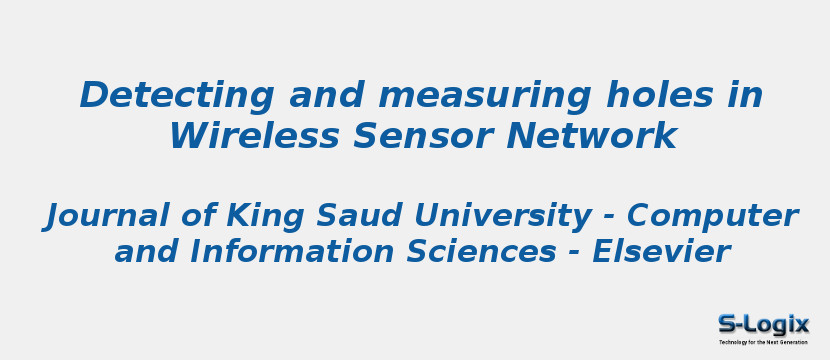Research Area: Wireless Sensor Networks
Area detection and measuring is one of the most important problems in Wireless Sensor Network (WSN) because it mainly relates to the continuity and functionality of most routing protocols applied to the Region of Interest (ROI). Electronics failure, random deployment of nodes, software errors or some phenomena such as fire spreading or water flood could lead to wide death of sensor nodes. The damage on ROI can be controlled by detecting and calculating the area of the holes, resulting from the damaged sensor networks. In this paper, a new mathematical algorithm, Wireless sensor Hole Detection algorithm (WHD), is developed to detect and calculate the holes area in ROI where the sensor nodes are spread randomly. WHD is developed for achieving Quality of Service (QoS) in terms of power consumption and average hole detection time. The dynamic behavior of the proposed WHD depends on executing the following steps. Firstly, WHD algorithm cuts down the ROI into many cells using the advantage of the grid construction to physically partition the ROI into many small individual cells. Secondly, WHD algorithm works on each cell individually by allocating the nearest three sensor nodes to each of the cell’s coordinates by comparing their positions, WHD connects each cell’s coordinate points with the selected sensor nodes by lines which construct a group of triangles, then WHD calculates the area of upcoming triangles. Repeating the previous step on all the cells, WHD can calculate and locate each hole in the ROI. The performance evaluation depends on the NS-2 Simulator as a simulation technique to study and analyze the performance of WHD algorithm. Results show that WHD outperforms, in terms of average energy consumption and average hole discovery time, Path Density algorithm (PD), novel Coverage Hole Discovery Algorithm (VCHDA) and Distriputed Coverage Hole Detection (DCHD).
Keywords:
Author(s) Name: S.M. Koriem,M.A. Bayoumi
Journal name: Journal of King Saud University - Computer and Information Sciences
Conferrence name:
Publisher name: Elsevier
DOI: 10.1016/j.jksuci.2018.08.001
Volume Information: Volume 32, Issue 8, October 2020, Pages 909-916
